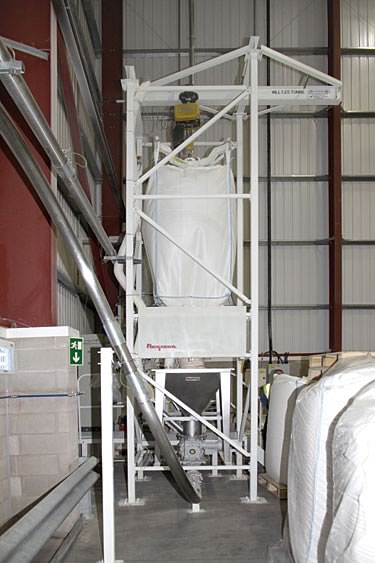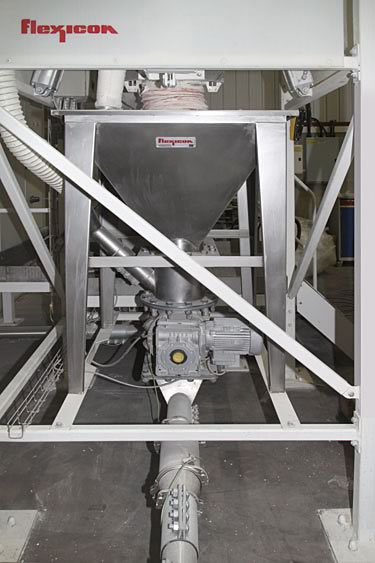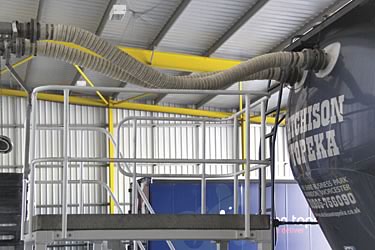 Click to enlarge
Click to enlargePneumatic lines leading to and returning from tanker trucks make quick, clean work of discharging bulk bags for distribution of powdered ingredients to customer sites throughout the UK.
 Click to enlarge
Click to enlargeRaw material is gravity fed from the hopper through a rotary airlock with a pick-up adapter for discharge into a pneumatic line leading to a tanker truck loading bay.
 Click to enlarge
Click to enlargeOne pneumatic line discharges into the tanker's inlet port, while a second line vents an outlet port, leading to a filter receiver where dust is separated from clean air vented to the atmosphere.


 Click to enlarge
Click to enlarge Click to enlarge
Click to enlarge Click to enlarge
Click to enlarge